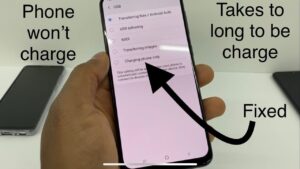How long can a car battery last without driving? It’s a common question that many car owners find themselves pondering. After all, car batteries are essential for starting your vehicle and powering its electrical components. But what happens when your car sits idle for an extended period? Is your battery still in good shape? The answer may surprise you. In this article, we’ll delve into the factors that affect a car battery’s lifespan when the vehicle is not being driven. So, if you’ve ever wondered how long your car battery can hold its charge without regular use, keep reading to find out.
How Long Can a Car Battery Last Without Driving?
Car batteries are an essential component of any vehicle, providing the necessary power to start the engine and keep electrical systems running smoothly. However, if a car is not driven regularly, the battery’s lifespan can be affected. In this article, we will explore how long a car battery can last without driving and discuss various factors that can impact its longevity.
1. Battery Self-Discharge
Car batteries, like any other type of battery, have a natural self-discharge rate. This means that even when not in use, the battery will slowly lose its charge over time. The rate of self-discharge can vary depending on the battery type and brand, but on average, car batteries can lose around 2% of their charge per day.
While this may not seem significant initially, over a prolonged period of inactivity, it can lead to a completely drained battery. In general, a car battery can last anywhere from a few weeks to a couple of months without being driven before it becomes discharged.
2. Climate and Temperature
The climate in which a vehicle is parked plays a significant role in determining how long a car battery will last without driving. Extreme temperatures, both hot and cold, can accelerate the self-discharge rate and reduce the overall lifespan of the battery.
In cold temperatures, the chemical reaction within the battery slows down, making it more challenging for the battery to generate power. Additionally, cold weather increases the internal resistance of the battery, meaning it requires more energy to start the engine. As a result, a car battery can drain faster in cold climates.
On the other hand, high temperatures can speed up the chemical reaction inside the battery, causing it to self-discharge more rapidly. Heat can also lead to increased corrosion, which can further impact the battery’s performance and lifespan.
2.1 Tips for Extreme Temperatures
To minimize the impact of extreme temperatures on your car battery, consider the following tips:
- Park your vehicle in a garage or shaded area to protect it from direct sunlight or extreme cold.
- Consider using a battery insulation kit or a battery blanket to regulate temperature fluctuations.
- If you live in an area with severe winters, investing in a battery warmer can help improve cold-weather performance.
- Regularly check the battery terminals for corrosion, which can worsen in hot climates and affect the battery’s ability to hold a charge.
3. Parasitic Draw
Parasitic draw refers to the constant power consumption by certain electrical components of a vehicle, even when the engine is not running. Common examples of parasitic draw include the memory functions of radios, clocks, alarms, and other electronic devices.
If a car is not driven for an extended period, these continuous power drains can slowly deplete the battery. While the current draw from each component is usually minimal, over time, it can add up and significantly impact the battery’s charge.
3.1 Identifying and Reducing Parasitic Draw
To minimize the impact of parasitic draw on your car battery, follow these steps:
- Check for any obvious signs of power drain, such as lights or devices that remain on when the vehicle is turned off.
- Use a multimeter to measure the current draw from the battery while the vehicle is off. If the reading exceeds 50 milliamps, there may be an excessive parasitic draw.
- If you suspect a parasitic draw, consult a professional mechanic or refer to your vehicle’s manual for guidance on locating and resolving the issue.
- Consider disconnecting the battery or using a battery maintainer to keep it charged during long periods of inactivity.
4. Battery Maintenance
Regular battery maintenance is crucial for maximizing its lifespan, especially when the vehicle is not driven frequently. Here are some essential tips for maintaining your car battery:
- Keep the battery terminals clean and free from corrosion. Corrosion can hinder the flow of electricity and lead to poor battery performance.
- Inspect the battery case for any signs of damage, such as cracks or leaks. A damaged battery may need to be replaced to avoid any safety risks.
- Ensure that the battery is securely fastened in its tray to prevent vibrations that can damage internal components.
- If your vehicle will be parked for an extended period, consider disconnecting the negative terminal of the battery to prevent any power drain.
- Regularly test your battery’s voltage using a voltmeter or consult a professional to assess its overall health.
5. Battery Chargers and Maintainers
If you know your car will not be driven for an extended period, using a battery charger or maintainer can help preserve the battery’s charge. These devices are designed to provide a low, constant charge, keeping the battery topped up and preventing self-discharge.
A battery charger is suitable for reviving a completely dead battery, while a maintainer is ideal for long-term storage or infrequently driven vehicles. Maintainers are often equipped with features such as automatic charging cycles and built-in safeguards to prevent overcharging.
5.1 Selecting the Right Charger or Maintainer
When choosing a battery charger or maintainer, consider the following factors:
- Compatibility with your specific car battery type (e.g., lead-acid, AGM, gel).
- Amperage rating: Higher amperage chargers can charge a battery faster, but they may not be suitable for maintenance mode. For long-term storage, a charger with a lower amperage rating is generally recommended.
- Smart features: Look for chargers or maintainers with features like automatic charge cycles, float mode, and safety protections against overcharging.
6. Driving Habits and Battery Health
Lastly, it is worth mentioning that regular driving habits can have a positive impact on your car battery’s overall health and lifespan. When a car is driven regularly, the battery gets recharged by the vehicle’s charging system, maintaining its charge level.
Frequent driving also helps to keep the engine and other electrical components in good working condition, reducing the risk of power drains or malfunctions. Therefore, if possible, try to drive your car at least once every few weeks, especially if it is not your primary vehicle.
In conclusion, the length of time a car battery can last without driving depends on various factors, including the battery’s self-discharge rate, climate, parasitic draw, and maintenance practices. On average, a car battery can last a few weeks to a couple of months without being driven before it becomes discharged.
To maximize your car battery’s lifespan and mitigate the effects of inactivity, it is important to follow proper maintenance procedures, protect it from extreme temperatures, and consider using battery chargers or maintainers for long periods of inactivity. By taking these precautions, you can ensure your car battery remains in good condition even during extended periods without driving.
Frequently Asked Questions
How long can a car battery last without driving?
Without driving, a car battery can last anywhere from a few weeks to a couple of months. The exact duration depends on various factors, such as the age and condition of the battery, temperature, and the power requirements of the vehicle’s electronics.
What factors can affect the lifespan of a car battery without driving?
Several factors can influence the lifespan of a car battery when the vehicle is not driven. These include:
- The age and condition of the battery: Older or weaker batteries may discharge more quickly.
- Temperature: Extreme heat or cold can affect a battery’s performance and longevity.
- Electricity usage: Some vehicles have electronics that continue to draw power even when the car is not in use, which can drain the battery.
How can I extend the lifespan of my car battery when not driving?
To prolong the life of your car battery when the vehicle is not driven, you can:
- Disconnect the battery: If you anticipate the car will be idle for an extended period, disconnecting the negative terminal can prevent unnecessary drainage.
- Use a battery maintainer or trickle charger: These devices can provide a low, steady charge to the battery to keep it topped up without overcharging.
- Store the vehicle in a moderate temperature environment: Extreme temperatures can negatively impact battery health, so keeping your car in a moderate climate can help.
Can I jump-start a car with a battery that hasn’t been driven for a long time?
Yes, you can jump-start a car with a battery that hasn’t been driven for a while. However, it’s important to ensure the jumper cables are connected correctly, and the assisting vehicle’s engine is running while jump-starting. Once the car with the discharged battery starts, it is recommended to drive it for a while to allow the alternator to recharge the battery.
When should I consider replacing my car battery if the vehicle is not driven frequently?
If your car battery has been sitting unused for an extended period, and you encounter difficulty starting the vehicle or notice the battery frequently losing charge, it may be time to consider replacing it. It is best to consult a professional or have your battery tested to determine its health and performance.
Final Thoughts
A car battery can last without driving for around one to two months, depending on various factors. These include the age and condition of the battery, the weather conditions, and any ongoing power drains. However, it’s important to note that even if your car is not being driven, the battery will still gradually lose its charge over time. To prolong the battery’s lifespan, it’s recommended to start the vehicle at least once every few weeks and let it run for a while to recharge the battery. Regular maintenance and proper care are crucial in ensuring the battery’s longevity without driving.


